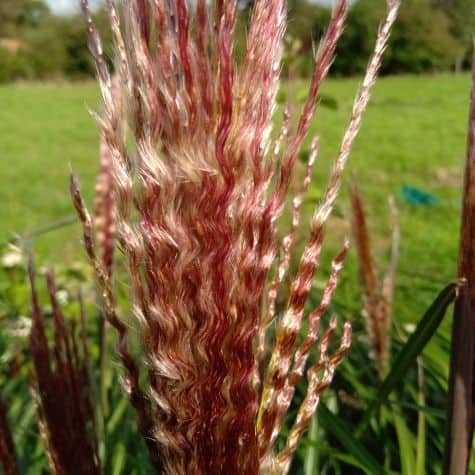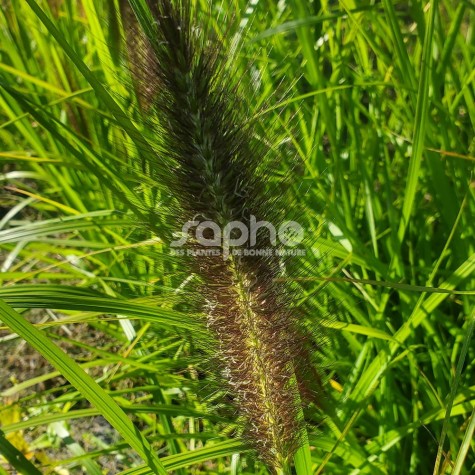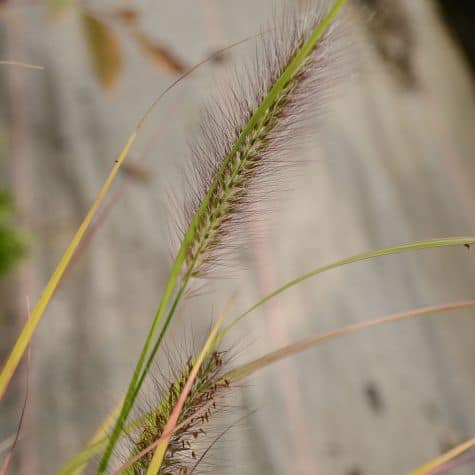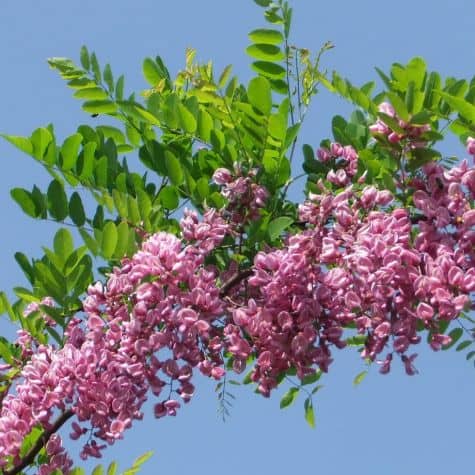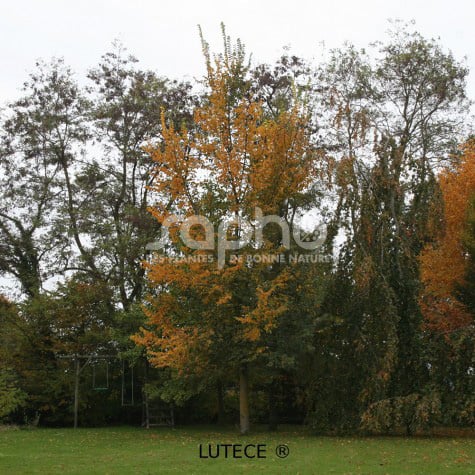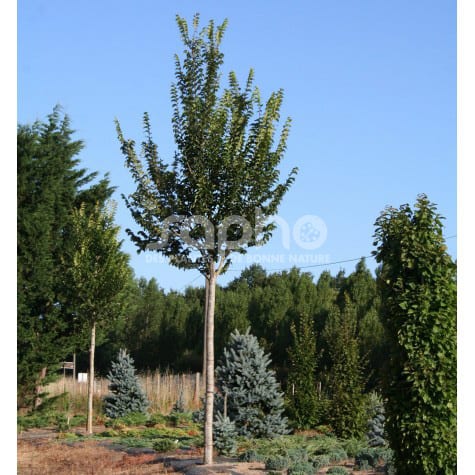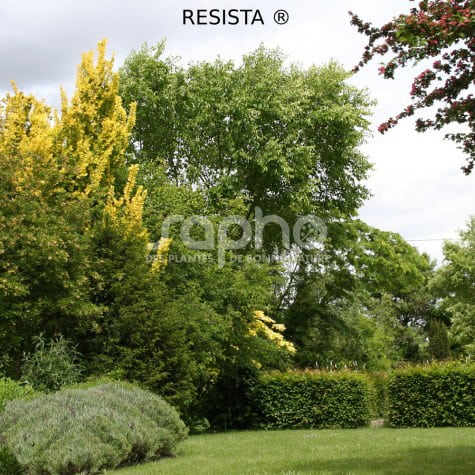A flamboyant Miscanthus in late summer
This grass has red flowers with pink highlights, appearing in summer and providing a superb contrast to its dark green foliage with silvery-white stripes.
In autumn, the colors of the stems and foliage change to reddish tones.
It's a strong, vigorous plant, with dense branching from an early age.
It can be used as an isolated plant, in a bed or as a plant screen.
Filter By
Foliage
Position
Where to find Sapho plants ?
For young plants
You will find the names of Sapho-licensed nurserymen at the bottom of each variety sheet.
For available plants
Please ask your nursery suppliers.
Each licensed propagator is free to market his young plants to all his customers.
Categories
Menu
All our varieties
A beautiful red autumn colour that lasts until the coldest weather
This grass has a red spike-like bloom that appears in summer, contrasting with its green, white-ribbed foliage.
In autumn, the foliage and stems take on an intense, long-lasting reddish hue.
Miscanthus can be used in the ground, as an isolated plant, in a bed or as a plant screen.
Charming black panicles contrasting with a green foliage
This variety of pennisetum has large, red-tinged spikes that turn purple-black.
The spikes appear abundantly, covering the entire plant from summer to late autumn.
It forms a rounded clump with narrow, glossy green foliage.
Use in beds, in association with other perennials or shrubs.
Red-purple green foliage, an original color for a Pennisetum!
This perennial grass's foliage takes on magnificent red hues in late summer and autumn.
Its early flowering remains decorative all summer long, in the form of large spikes.
It has a compact habit, is hardy and requires little water.
It adapts perfectly in combination, in a bed, rockery or tub.
A spectacular improvement of ‘Pink Cascade’
This variety is the result of numerous improvements to the red helmet variety, and has strong, flexible branches (virtually thornless).
Its generous flowering offers large clusters of crimson-pink flowers that are very melliferous.
Resistant to heat, drought, wind and pests, it thrives even in poor soil.
Use as an isolated plant or in the garden.
Resistant to the Dutch elm disease, our towns and countryside have found the elm again.
Tested by INRAE, this hybrid is the result of cross fertilization of six French varieties, plus an English and a Chinese one. It is resistant to the Dutch elm disease.Its bark is smooth. The leaves are quite similar to the common elm tree: asymmetrically toothed, with a rough underside. The deep green foliage is dense. In the autumn it has a beautiful golden yellow tint.In March, before the leaves, grow discreet flowers in the shape of little red globules without petals.Its slender trunk gives LUTECE® a perfect aptitude for a high-stem training, better than Ulmus RESISTA® 'Sapporo Gold'; growing naturally its habit is regular and homogeneous. It also makes a very good shrub. It is fast growing.Perfectly adapted to landscape hedges, this cultivation is equally interesting planted in groups on an embankment for example, but also as individual tree or grown in line if it has been grown as a full standard.The name of LUTÈCE® was given to it in recognition of the help provided by Parks and Gardens Department of the city of Paris for having taken care of a field of experimentation in the Vincennes Park.
Excellent alignement tree resistant to Dutch Elm Disease.
Selected, tested and compared by INRAE, notably in a plantation in the Vincennes forest in Paris since 1983, this elm selection shows a good resistance to Dutch Elm Disease, and this without suffering damage through other agents, such as insects, pathogenes fungi or summer drought.The strong green foliage honeycombed, toothed and well veined is similar to the indigenous European elms.It is of upright growth, slimmer and higher than LUTECE®.VADA® has all the qualities of an excellent alignment tree, or planted individually.
For a country style hedge resistant to Dutch Elm Disease.
Natural hybrid between Ulmus pumilla and Ulmus davidiana var japonica, first discovered in the Sapporo Botanical Gardens, RESISTA® has undergone many tests by INRAE and the Service for the Protection of Plants. It has revealed to be resistant to the Dutch Elm Disease, which has ravaged the elms in our towns and countryside.
A very vigorous tree, it can reach 20 m high and 6 m wide in good growing conditions. It is slightly smaller than our traditional elms.
Its light green foliage turns golden yellow in autumn.
The first elm to be resistant to Dutch Elm Disease, it goes well in country style hedges without resembling the Ulmus glabra.

